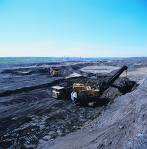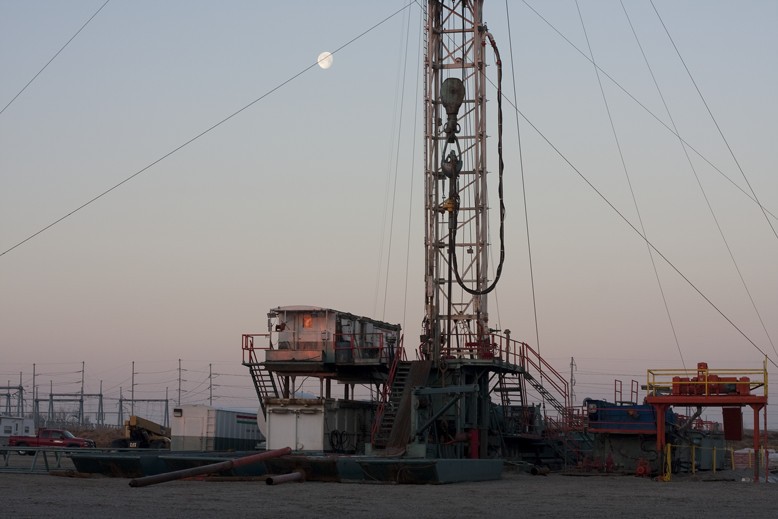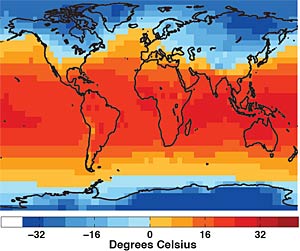I find it interesting that Three Mile Island just refuses to go away. 30 years later all the damage that happened and the deaths (yes deaths) make Nuclear’s future in the North and West bleak. But those hicks (sorry) in the South well that is another matter. But first: The Improbable :-0
http://www.suntimes.com/business/1540009,CST-FIN-solar23.article
Exelon to build largest U.S. urban solar power
plant on Chicago’s South Side
ComEd parent looks to stimulus money for 10-megawatt photovoltaic building near 120th and Peoria in West Pullman
April 23, 2009
BY CHERYL V. JACKSON Staff Reporter
ComEd parent Exelon Corp. plans to build the nation’s largest urban solar power plant on the city’s South Side by year’s end.

A view of a 39-acre plot on the South Side that will be covered in solar panels by Exelon.
(Scott Stewart/Sun-Times)
The planned 10-megawatt solar photovoltaic building would be at an industrial site near 120th and Peoria in the West Pullman neighborhood, Chicago-headquartered Exelon said Wednesday.
The plant’s 32,800 solar panels would convert the sun’s rays into enough electricity to meet the annual energy requirements of 1,200 to 1,500 homes. It would eliminate about 31.2 million pounds of greenhouse gas emissions a year, the equivalent of taking more than 2,500 cars off the road or planting more than 3,200 acres of forest, Exelon said.
“This is exactly the type of shovel-ready, community-benefitting project that the Obama administration is touting,” said Thomas O’Neill, senior vice president for new business development at the company’s Exelon Generation.
:}
Did I mention that Mike Madigan might be looking at allowing the major utillities to get back into generation?
Madigan: Electric dereg law may need overhaul
Overhaul might protect consumers, House speaker says
By ADRIANA COLINDRES
THE STATE JOURNAL-REGISTER
Posted Apr 15, 2009 @ 11:40 PM
Last update Apr 16, 2009 @ 06:36 AM
The 1997 law that restructured Illinois’ electric industry has failed to live up to its promise, and it may be time to consider an overhaul to protect consumers from volatile power prices, says House Speaker Michael Madigan.
Madigan, a Chicago Democrat, has filed a legislative resolution calling on the Illinois Power Agency to study whether to let utility companies regain the authority to run their own power-generating plants.
Such a move would reverse a key part of the 1997 law often referred to as “electric deregulation.” Under that law, utility companies such as Ameren Illinois and Commonwealth Edison stopped generating electricity and became power-delivery companies only. The companies’ power-generating arms were spun off into separate, unregulated entities.
The thinking at the time was that consumers would benefit because they’d be able to shop for power as they shop for other goods and services, looking for the best deal and saving money. But competition never developed in the residential market, and residential customers have seen their bills increase.
:}
That Mike he is always thinking of us. But this is what they are probably more worried about:
http://www.indyweek.com/gyrobase/Content?oid=oid%3A393821
disaster raise doubts over nuclear plant safety
The truth behind the meltdown
22 APR 2009 • by Sue Sturgis
Editor’s note: This story originally appeared in Facing South, the online magazine of the Institute for Southern Studies.


Three Mile Island nuclear power plant near Harrisburg, Pa.
Photo courtesy of Dept. of Health and Human Services
|
It was April Fool’s Day, 1979—30 years ago this month—when Randall Thompson first set foot inside the Three Mile Island nuclear power plant near Middletown, Pa. Just four days earlier, in the early morning hours of March 28, a relatively minor problem in the plant’s Unit 2 reactor sparked a series of mishaps that led to the meltdown of almost half the uranium fuel and uncontrolled releases of radiation into the air and surrounding Susquehanna River.It was the single worst disaster ever to befall the U.S. nuclear power industry, and Thompson was hired as a health physics technician to go inside the plant and find out how dangerous the situation was. He spent 28 days monitoring radiation releases.
Today, his story about what he witnessed at Three Mile Island is being brought to the public in detail for the first time; and his version of what happened during that time, supported by a growing body of other scientific evidence, contradicts the official U.S. government story that the Three Mile Island accident posed no threat to the public.
“What happened at TMI was a whole lot worse than what has been reported,” Thompson told Facing South. “Hundreds of times worse.”
:}
All of these articles gooooooooooo on and on about the radioactive iodine that was released being huge, that the total amount of released material was larger yet (nobody mentions it but a lot of it went into the river) and that approximately 450 people died. So I am just going to stitch some articles together. You can read the whole thing if you want:
http://www.commondreams.org/view/2009/04/03-9
That it happened on April Fools day means that there is a god.
:}
Anomalies abound
That a lot of people died because of what happened at Three Mile Island, as the Thompsons claim, is definitely not part of the official story. In fact, the commercial nuclear power industry and the government insist that despite the meltdown of almost half of the uranium fuel at TMI, there were only minimal releases of radiation to the environment that harmed no one.
For example, the Nuclear Energy Institute, the lobbying group for the U.S. nuclear industry, declares on its website that there have been “no public health or safety consequences from the TMI-2 accident.” The government’s position is the same, reflected in a fact sheet distributed today by the Nuclear Regulatory Commission, the federal agency charged with overseeing the U.S. nuclear power industry: TMI, it says, “led to no deaths or injuries to plant workers or members of the nearby community.” [The watchdog group Three Mile Island Alert offers their take on the NRC factsheet here.]
Those upbeat claims are based on the findings of the Kemeny Commission, a panel assembled by President Jimmy Carter in April 1979 to investigate the TMI disaster. Using release figures presented by Metropolitan Edison and the NRC, the commission calculated that in the month following the disaster there were releases of up to 13 million curies of so-called “noble gases” — considered relatively harmless — but only 13 to 17 curies of iodine-131, a radioactive form of the element that at even moderate exposures causes thyroid cancer. (A curie is a measure of radioactivity, with 1 curie equal to the activity of one gram of radium. For help understanding these and other terms, see the glossary at the end of this piece.)
But the official story that there were no health impacts from the disaster doesn’t jibe with the experiences of people living near TMI. On the contrary, their stories suggest that area residents actually suffered exposure to levels of radiation high enough to cause acute effects — far more than the industry and the government has acknowledged.
Some of their disturbing experiences were collected in the book Three Mile Island: The People’s Testament, which is based on interviews with 250 area residents done between 1979 and 1988 by Katagiri Mitsuru and Aileen M. Smith.
It includes the story of Jean Trimmer, a farmer who lived in Lisburn, Pa. about 10 miles west of TMI. On the evening of March 30, 1979, Trimmer stepped outside on her front porch to fetch her cat when she was hit with a blast of heat and rain. Soon after, her skin became red and itchy as if badly sunburned, a condition known as erythema. About three weeks later, her hair turned white and began falling out. Not long after, she reported, her left kidney “just dried up and disappeared” — an occurrence so strange that her case was presented to a symposium of doctors at the nearby Hershey Medical Center. All of those symptoms are consistent with high-dose radiation exposure.
:}
But this has been going on for years…please ignore the nutball survivalist website. It is difficult to get Ken Briggs testimony online. Don’t forget we had Jimmie “the nuke” Carter as President>>>
Nuclear Power Plant Hazard Issues
Are you prepared for a nuclear power plant disaster?
3 March 2001, V3 by Kevin Briggs, Director, USDPI
Observations about the Three Mile Island Nuclear Disaster
“Friday, Saturday, and Sunday were hectic days in the emergency preparedness offices of the counties close to Three Mile Island. Officials labored first to prepare 10-mile evacuation plans and then ones covering areas out to 20 miles from the plant. {USDPI comment: State and local governments, with support from the Federal government and utilities, currently develop plans that include a “plume emergency planning zone” with a radius of only 10 miles from each nuclear power plant. However, government officials recognize that in a catastrophic incident, a 20 mile evacuation radius akin to what was needed with the Chernobyl disaster may be more appropriate.} The Pennsylvania Emergency Management Agency recommended Friday morning that 10-mile plans be readied. The three counties closest to the nuclear plant already had plans to evacuate their residents — a total of about 25,000 living within 5 miles of the Island. A 10-mile evacuation had never been contemplated. For Kevin Molloy in Dauphin County, extending the evacuation zone meant the involvement of several hospitals — something he had not confronted earlier. There were no hospitals within 5 miles. Late Friday night, PEMA told county officials to develop 20-mile plans. Suddenly, six counties were involved in planning for the evacuation of 650,000 people, 13 hospitals, and a prison.”
:}
I quote this to say what should have happened immediately. Not 1 day later when the State was notified and not 3 days later when the Feds had been notified. By that time they knew that a good chunk of New York and Pennsylvania were involved so they DID NOTHING.
The damage was done pretty much in the first several hours of the crisis. There is this from 1979 and it is nasty:
http://econospeak.blogspot.com/2008/11/five-versions-of-truth-for-three-mile.html
http://www.ratical.org/radiation/SecretFallout/SFchp18.html
http://www.ratical.org/radiation/SecretFallout/index.html
Deaths after Three Mile Island accident (end of March 1979):
US Center for Health Statistics for Pennsylvania in May 1979. A SUMMARY
US Center for Health Statistics for Pennsylvania in May 1979 showed the following (per thousand live births): 147 infant deaths in February, 141 in March, 166 in April, 198 in May. At the same time the number of births had declined from 13,589 in March 1979 to 13,201 in May. For the United States as whole the rate of infant deaths per 1000 live births had declined 11 percent between March and May 1979…., “the Pennsylvania figures for March and May representing an increase of 57 deaths, which was more than three times the statistically expected normal fluctuation of about +/- 16, and thus unlikely to occur purely by chance in less than one in a thousand instances.”
The US Vital Statistics for Upstate New York in 1979. A SUMMARY
The US Vital Statistics for Upstate New York in 1979 (north, northwest, and northeast of Harrisburg some 100 to 200 miles away and in the direction the wind was blowing when the heaviest releases of radiation were occurring.) According to these studies of wind direction the expectation was that “The figures for the rest of the state outside of New York City should have gone up, while New York City should either have shown no change or an actual decline….the numbers showed: Between March and May, infant deaths outside New York City climbed an amazing 52 percent, by 63 deaths, from 121 to 184. For New York City during the same period the number declined from 166 to 129. Again, these changes were many times as large as normal fluctuations, and the number of births changed relatively little, or by less than 10 percent.
What about the data for Harrisburg? A SUMMARY.
“only Tokuhata had the data for the 5-mile and 10-mile zones around the plant, and there was no way that I would be able to obtain them…Warren L. Prelesnik, executive vice-president in charge of administration Harrisburg Hospital provided a list of the monthly infant deaths, fetal deaths, stillbirths, and live births in the Harrisburg Hospital for the previous two years. In February, March, and April of 1979, there had only been 1 infant death per month. But for each of the two months of May and June, there were 4. Effectively, since the number of births had not only remained nearly the same but had actually declined slightly, this was more than a fourfold increase in the mortality rate, or of the right magnitude required to fit the observed 50 percent rise in the more distant area of upstate New York. From an average of 5.7 per 1000 live births in the three months of February, March, and April — before the releases could have had an appreciable effect — the newborn mortality rate had risen to 24.1 for May and 26.0 for June, an unprecedented summer peak that did not occur the previous year. In fact, for May and June of 1978, there had been a total of only 3 infant deaths, while for the same period in 1979 after the accident, there had been 8.As some of my colleagues with whom I discussed these findings agreed, by themselves the Harrisburg Hospital numbers were of course small, and only marginally significant, representing only about one-third of all the births and deaths in Harrisburg. But taken together with the vastly more significant and independent numbers for all of Pennsylvania, upstate New York, New York City, New Jersey, Maryland, and Ohio, there was now a much greater degree of certainty: It would have been much too much of a coincidence — perhaps less than one in a million — for all these different numbers to show the pattern they did.
The time and cause of death due to radiation. What can be expected. SUMMARY
One of the remaining important questions that had to be checked, however, was the time and cause of death? if the excess deaths were connected with the radioactive iodine released from the plant, then they should be associated with underweight births or immaturity, since damage to the fetal thyroid would slow down the normal rapid growth and development of the baby in the last few months before birth. The development of the lungs, which have to be ready to begin breathing at the moment of birth, is one of the most critical phases of late fetal development. Any developmental slowdown would be most life-threatening if it led to the inability of the tiny air sacs in the lungs to inflate and start supplying the blood with oxygen. Failure of the lungs to function properly would therefore lead to immediate symptoms of respiratory distress, and if efforts to treat the baby should not succeed, it would die in a matter of minutes, hours, or days of respiratory insufficiency or hyaline membrane disease. Thus, one would not expect to find as large an increase in spontaneous miscarriages well before birth as newborn deaths within a short time after birth, since the lungs did not need to start functioning until the baby was born. Also, there should be no significant increase in gross congenital malformations a few months after the accident, since by the time the baby in the mother’s womb had reached the sixth or seventh month of development, all the major organs had already fully developed. Thus, only some six to seven months after the accident would one expect some increase in serious physical malformations, since these infants would have been exposed to radiation in the first three months of development of critical-organ formation.
data from the Harrisburg Hospital supported these expectations
State of Pennsylvania Health Department had discovered a rise in hypothyroidism among newborn babies in areas where the radioactive gases from Three Mile Island had been carried by the winds.
:}
Now aren’t you glad you know? More tomorrow on Nukes in the South.
:}
![]()
![]()
![]()
 Mt.Natib is the highest summit in the entire Natib Caldera System in the Bataan Natural Park, a dormant volcano with an elevation of 1,253 meters above sea level (masl). It lies between the larger Old Caldera and the smaller Pasukulan Caldera and represents the latest of the volcanic edifice to develop in the area. The slope is characterized by very steep forested slope. Mossy forest characterized by small-stunted trees occurs approaching the peak. The peak is covered by a small patch of grassland. Also found are boulders with inscribed names of American expeditionary forces that climbed the peak way back the 1930s.
Mt.Natib is the highest summit in the entire Natib Caldera System in the Bataan Natural Park, a dormant volcano with an elevation of 1,253 meters above sea level (masl). It lies between the larger Old Caldera and the smaller Pasukulan Caldera and represents the latest of the volcanic edifice to develop in the area. The slope is characterized by very steep forested slope. Mossy forest characterized by small-stunted trees occurs approaching the peak. The peak is covered by a small patch of grassland. Also found are boulders with inscribed names of American expeditionary forces that climbed the peak way back the 1930s.
















 Febuary
Febuary